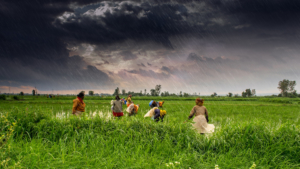6 Poverty-Fighting Advances in Agriculture

Advances in agriculture are key to both reducing world poverty and maintaining the health of the planet. A 2016 study by the World Bank Group found that 65 percent of adults living in poverty support themselves through agriculture. Additionally, economic growth in the agriculture sector has two to four times the potential to raise income among the world’s poor than growth in any other sector.
However, for all the benefits of agriculture, the industry can also be harmful to the planet. Agriculture is responsible for 70 percent of freshwater use and 24 percent of greenhouse gas emissions. So, it is important for small farmers to utilize advancements that minimize pollution and waste while cutting costs and increasing yields. These six poverty-fighting advances in agriculture and technology are key ways for poor farmers to achieve both of these goals.
6 Poverty-Fighting Advances in Agriculture
- One way for farmers to increase crop yields and decrease costs is through Fertilizer Deep Placement (FDP). FDP involves condensing fertilizer into bricks that are then placed a few inches under ground. The bricks then slowly dissolve, giving important nutrients to crops. Because the fertilizer is under the soil surface, fewer nutrients are lost to runoff. It also saves labor by ensuring that crops receive nutrients continuously, without farmers having to repeatedly apply fertilizer. A study conducted in Bangladesh in 2015 showed that using FDP increased rice crop yields by 15-20 percent over an average of three years.
- Reducing pesticide and herbicide use can both benefit the environment and save costs. One way farmers can reduce their use is by treating seeds instead of mature plants. When this method is used, the chemicals become incorporated into the plants themselves. In contrast to traditional methods, this means that there is no risk of the chemicals ending up in nearby rivers and streams, and it saves supplies and reduces pollution.
- Multiple mobile apps also help farmers better care for their crops and livestock. For instance, the Farming Instructor app provides agricultural knowledge to farmers via text, audio and animations. The app also allows farmers to share tips and information with each other. Another app called Hello Tractor allows farmers to cheaply rent tractors as needed, instead of having to purchase one. So far, 22,500 farmers have utilized the startup, which says its customers had a 200 percent increase in crop yields.
- Refrigeration is an important resource that prevents crop spoilage during transportation and allows families to store food. This means subsistence farmers have enough to eat even during dry periods and can spend less time gathering food. Refrigeration also lengthens the shelf-life of vaccines and medicines. Advancements like solar-powered refrigerators are making refrigeration available to more and more rural farmers.
- Precision agriculture uses tools like drones, robots, satellites and large-scale data gathering to determine the optimal levels of water and fertilizer for each individual plant. This holistic method has the potential to greatly increase crop yields and make farming more environmentally friendly by reducing waste. Precision agriculture has already been used with much success in North America and Europe. Spotty internet connection has limited its introduction to developing countries. However, programs in India and Vietnam have seen success. Benefits for rural farmers include increased crop yield, reduced costs, more market opportunities, more free time and a reduced gender income gap.
- Often, small scale farmers in remote regions have to travel long distances to buy seeds and fertilizer, much of which can be prohibitively expensive. To address this problem, NGOs such as Alliance for a Green Revolution in Africa and Cultivating New Frontiers in Agriculture (CNFA) support and train local networks of agro-dealers. These agro-dealers sell farming supplies cheaply and in small quantities suitable for small-scale subsistence farmers. They can also provide veterinary support, mechanical fixes and training, and marketing.
Small farms face more and more challenges from problems like desertification, drought and the spread of pests and diseases. With these poverty-fighting advances in agriculture, farmers are better prepared to meet the challenges and lift themselves and their families out of poverty.
– Clarissa Cooney
Photo: Flickr
